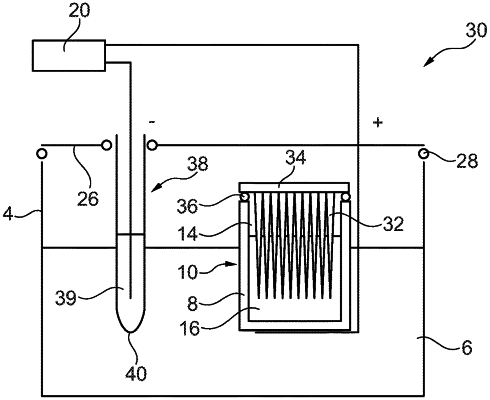| CPC C25B 11/02 (2013.01) [C25B 1/02 (2013.01); C25B 11/047 (2021.01); C25B 13/07 (2021.01)] | 13 Claims |

|
1. A system for extracting oxygen from powdered metal oxides, the system comprising:
a container comprising an electrolyte,
at least one cathode,
at least one anode,
a power supply, and
a conducting structure,
wherein the cathode is shaped as a receptacle having a porous shell, which has an upper opening, the cathode being arranged in the electrolyte with the opening protruding over the electrolyte,
wherein the conducting structure comprises a plurality of conducting elements and gaps between the conducting elements,
wherein the power supply is connectable to the at least one cathode and the at least one anode to selectively apply an electric potential across the cathode and the anode,
wherein the conducting structure is insertable into the cathode, such that the conducting elements reach into a receiving space of the cathode,
wherein the conducting structure is electrically connectable to the cathode, and wherein the system is adapted for reducing at least one respective metallic species of at least one metal oxide of feedstock inside the shell of the cathode with inserted conducting structure by applying the electric potential, wherein the potential is greater than the dissociation potential of the at least one metal oxide; and
wherein the conducting structure comprises
a plurality of pins arranged at a distance to each other.
|